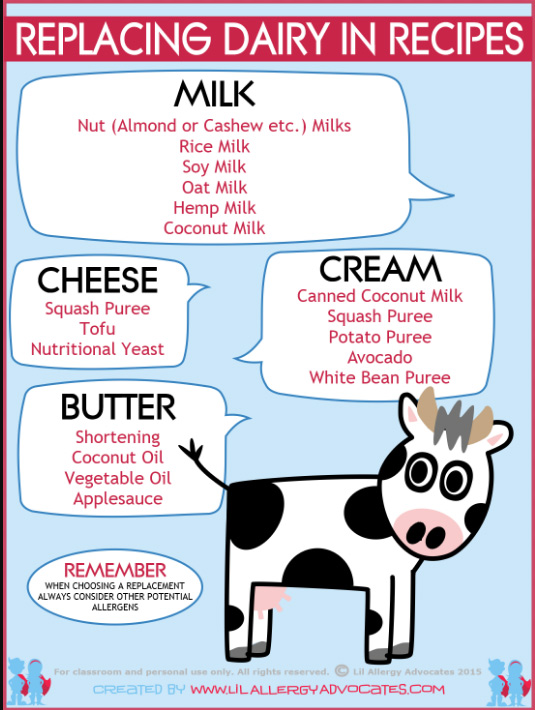COMMON ALLERGENS → Dairy
COMMON ALLERGENS → Dairy

DID YOU KNOW?
80% of children with a milk allergy outgrow it before they turn 16 years old!
FAST FACTS
- The term dairy encompasses animal milk and milk products such as cheese, ice cream, butter, yogurt, etc. In the United States, dairy allergy most commonly references cow’s milk.
- Cow’s milk allergy is the most common allergy in early childhood, and typically develops two months after first exposure- usually between the ages of 1 and 2.
- GI symptoms (diarrhea, bloating, cramps, vomiting) are most common after ingestion, followed by skin symptoms (hives, swelling, itching) and anaphylaxis.
- Milk allergy cross-reactivity is common, those allergic to cow’s milk will also likely be allergic to goat, buffalo, and/or camel milk, etc.
- It’s important to distinguish a dairy allergy, which involves the immune system, from a sensitivity like lactose intolerance, which is attributable to an enzyme deficiency (i.e. lactase).
Common (and Hidden!) Sources
- Animal milk in all forms (dried, powdered, condensed, etc), cheese, yogurt, butter, ice cream/gelato, cream, custard, pudding, half and half, ghee.
- Watch out for these ingredients on labels: casein, diacetyl, lactose, lactalbumin, lactoferrin, lactulose, and whey in all forms.
- Commonly found in: baked goods, caramel, chocolate, lunch meat, margarine, nisin, nougat, artificial butter flavor, vegetarian meat alternatives, au gratin/creamy dishes, cereal, donuts, salad dressings, mashed potatoes.

REFERENCES
1. Vandenplas Y, De Greef E, Devreker T. Treatment of Cow’s Milk Protein Allergy. Pediatr Gastroenterol Hepatol Nutr. 2014;17(1):1-5. doi:10.5223/pghn.2014.17.1.1.
2. Fiocchi A, Brozek J, Schünemann H, et al. World Allergy Organization (WAO) Diagnosis and Rationale for Action against Cow’s Milk Allergy (DRACMA) Guidelines. World Allergy Organ J. 2010;3(4):57-161. doi:10.1097/WOX.0b013e3181defeb9.
3. http://acaai.org/allergies/types-allergies/food-allergy/types-food-allergy/milk-dairy-allergy.










